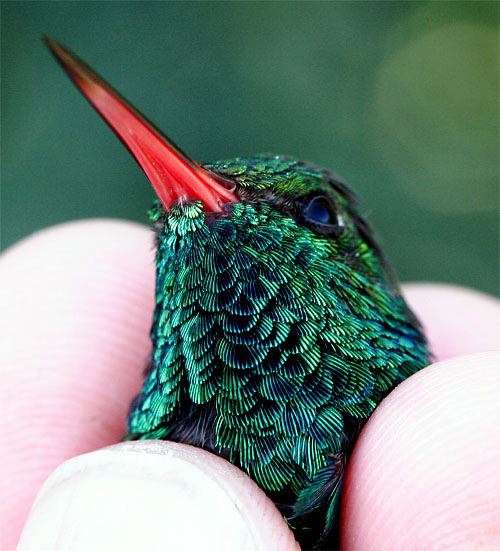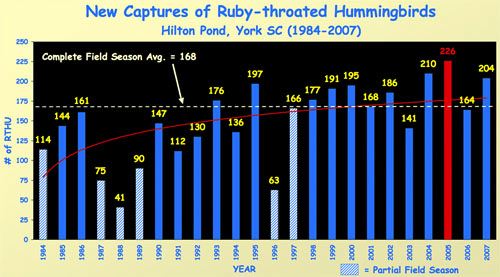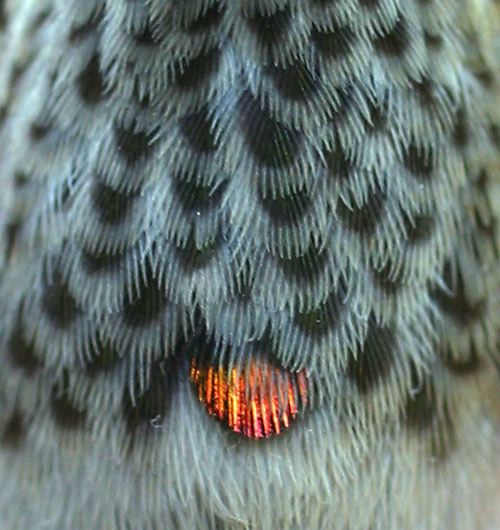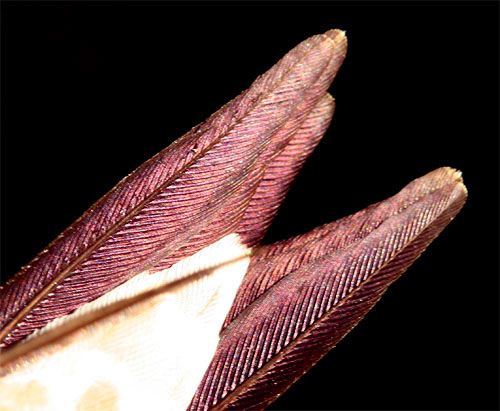|
|
|||
|
(Back to Preceding Week; on to Next Week) |
|
|
|
BYE-BYE, RUBY-THROATS.
2007 WAS A VERY GOOD YEAR! In spring, folks who enjoy hummingbirds get very enthusiastic and hang their feeders. When only a few hummers come, some of these same folks begin to wonder what's wrong. Usually, nothing is, it's just that people remember swarms of hummers they had in late summer and forget in spring there are NEVER many birds. After all, in very early April in the Carolina Piedmont there are only adult males, followed shortly thereafter in migration by adult females, and it takes a while before they all establish territories, mate, nest, and fledge enough young to drive numbers up a little. This whole process may take six weeks or so, meaning that even if your hummers arrive in mid-April it will be June before the earliest young start to fledge--and that's in the SOUTHERN states. So our usual response to all those frantic phone calls and E-mails is for folks to be patient, to wait until August for the usual hummingbird frenzy, and then to contact us in October AFTER the hummers are gone to ask whether this year's population was smaller than usual. Only then can we look at our data and tell you what our banding results say: The ruby-throats may have gone bye-bye, but 2007 was a very good year.
All text & photos © Hilton Pond Center We started banding Ruby-throated Hummingbirds, Archilochus colubris, at Hilton Pond Center in 1984, mostly because we wanted to know how many we had at our feeders. Now it's 24 years later and all we can say is we learn many new things about ruby-throats every year; it follows that the more we learn about hummingbirds the more we realize there's still a lot we DON'T know. However, through banding--both at Hilton Pond and in Costa Rica on the ruby-throats' wintering grounds--we at least are discovering a few things about longevity, migration, and site fidelity. This week we'd like to share some of this info by summarizing our hummingbird banding results for 2007. The season started on 16 April, more than two weeks AFTER our early banding record of 27 March 1991; most years we band our first Ruby-throated Hummingbird (RTHU) at Hilton Pond Center on or before 10 April. Progress was excruciatingly slow with only five total bandings through 23 May, but things took off and we banded 23 birds by that month's end. For the rest of the spring and summer banding proceeded at a near-record pace (see Chart 1 above), finally tapering off in mid-September. The final capture occurred on 4 October, roughly our average late date for the last RTHU of the season. Although Chart 1 with all its squiggly lines shows nicely how banding progressed through the 2007 season, it's a bit easier to see how successful we were in by looking at the bar graph in Chart 2 just above. As shown, our best year ever was two years ago (2005) when we banded 226 RTHU. For some reason there was a big drop last year with only 164 hummers captured, but the Hilton Pond population--which includes both breeding birds and spring and fall migrants--rebounded nicely in 2007 to our third-best total of 204 birds. That was also well above our 18-year average of 168, a figure that does not include the six partial field seasons for which we were away from Hilton Pond for significant portions of the summer. If we can trust the red trend line on the chart above, Ruby-throated Hummingbirds do indeed appear to be on the increase at the Center; we doubt the upward curve is a result of our becoming more experienced at catching hummers, nor does it reflect more hours of trapping and mist netting.
At the end of each hummingbird banding season, it's always interesting to look at the breakdown among age/sex classes as illustrated in Table 1 (above). Most years adult females outnumber adult males by about a 3:2 margin, while the ratio flips among young birds so that fledgling males outnumber young females. The adult ratios were a little skewed in 2007, primarily because we banded a record-high number of adult females (47) while capturing an exactly average number of adult males (21). Comparatively, juvenile RTHU were right on with almost exactly 60% of banded hatch-year birds being males. We caught an average number of young males (71), but the 65 young females were well above the 18-year average and almost set a new record. Had young males been banded at the same rate as young females, we might have surpassed our record of 226 total RTHU banded in a season at Hilton Pond Center.
It's hard to know whether the relatively poor showing by young males is simply a one-year blip or if there may have been something in the environment that cut their numbers. We doubt it was the Easter Freeze--which occurred before the majority of RTHU were even nesting this year--but it's worth noting male Ruby-throated Hummingbirds ARE smaller than females and might be more susceptible to inclement weather. The male also tends to get into more trouble as he goes about his business of establishing a territory and defending it against other males. Even though 204 RTHU banded at Hilton Pond Center in 2007 didn't reach our all-time high of 226, we still encountered more hummers than usual--mostly because of an amazing influx of "old" birds from previous seasons. When we first reported on our 2007 hummingbird banding progress back on 31 May, we mentioned we already had recaptured 33 "old" hummers banded prior to this year. From 1984 through 2006, we had 23 returns on average per year, so we were elated in 2007 to end up recapturing 49 RTHU we banded in 2006 or before--an incredible 36% increase over the previous record of 36 set in 2000! Those 49 individuals are listed in Table 2 below, showing the banding date and when it was recaptured in 2007, as well as its age at banding and recapture and any previous returns. (We won't apologize that the list is long; in fact, we're excited it is!)
Banding hummingbirds provides interesting data, but RECAPTURING them tells us much more--even if the birds aren't encountered long distances away from the banding site. Thus, we'd like to point out some things in Table 2 (above) that should be interesting to the hummingbird enthusiast, especially when we toss in the additional results in Table 3 (below).
The initial items of interest pertain to RTHU we first encountered at Hilton Pond Center last year, in 2006:
Other gleanings from Table 2 above:
Perhaps the most interesting return for 2007 at Hilton Pond Center was Y15257, re-trapped on 23 July. Banded as a hatch-year bird in 2002, this sixth-year female was not seen again until this year--the first time in 24 years we've had a hummer go that long before recapture. Where she's been in the interim we'll never know. (Curiously, two hours after trapping the ancient and venerable Y15257 we pulled the string on Y15358, a fifth-year female from 2003 that returned in 2004 and 2005 but was not seen last year.)
On the other end of the scale for site fidelity are two males--Y15131 and Y15190; they were first caught in 2002, the former as an adult male that year and the latter as a fledgling. Both these birds have been back EVERY year since. As an after-sixth-year male, Y15131 ties with a female as the OLDEST Ruby-throated Hummingbirds known for Hilton Pond Center; that female was banded in 1997 and not seen after 2002, so Y15131 still has a chance to catch the record-holding nine-year-old RTHU documented by the federal Bird Banding Laboratory. What does it mean when record numbers of "old" birds returned to Hilton Pond Center in 2007? We're not sure, exactly, but perhaps a mild hurricane season in the Gulf of Mexico last fall allowed for greater survival during southward migration. In any case, it's nice to see these familiar band numbers--especially when we consider that old Y15131 and Y15190 have been back and forth across the Gulf more times than we have for our Costa Rica banding expeditions! In conclusion, we've shown you a bunch of numbers this week about new hummingbirds and those from years past, but that's about the only way we know to present information summarizing our annual hummer banding results. With our third-highest total of new birds (204) PLUS a record-setting 49 returns, we handled 253 Ruby-throated Hummingbirds at Hilton Pond Center in 2007, making it without doubt a very good year! All text & photos © Hilton Pond Center Gorget photos above represent the four different age/sex classes of
Comments or questions about this week's installment?
Thanks to the following fine folks for recent gifts in support of Hilton Pond Center for Piedmont Natural History and/or Operation RubyThroat: The Hummingbird Project. Your tax-deductible contributions allow us to continue writing, photographing, and sharing "This Week at Hilton Pond." (Please see Support if you'd like to make a gift of your own.)
IMPORTANT NOTE: If you ever shop on-line, you may be interested in becoming a member of iGive, through which nearly 700 on-line stores from Barnes and Noble to Lands' End will donate a percentage of your purchase price in support of Hilton Pond Center and Operation RubyThroat. For every new member who signs up and makes an on-line purchase iGive will donate an ADDITIONAL $5 to the Center. Please sign up by going to the iGive Web site. It's a painless, important way for YOU to support our work in conservation, education, and research. "This Week at Hilton Pond" is written & photographed You may wish to consult our Index of all nature topics covered since February 2000. You can also use our on-line Hilton Pond Search Engine at the bottom of this page. For a free, non-fattening, on-line subscription to |
||||||||||||||||||||||||||||||||||||||||||||||||||||||||||||||||||||||||||||||||||||||||||||||||||||||||||||||||||||||||||||||||||||||||||||||||||||||||||||||||||||||||||||||||||||||||||||||||||||||||||||||||||||||||||||||||||||||||||||||||||||||||||||||||||||||||||||||||||||||||||||||||||||||||||||||||||||||||||||||||||||||||||||||||||||||||||||||||||

 Week One of our annual
Week One of our annual








 Please report your
Please report your Oct 15 to Mar 15:
Oct 15 to Mar 15:
